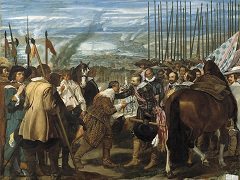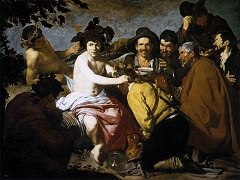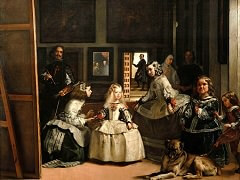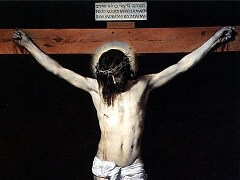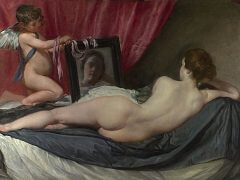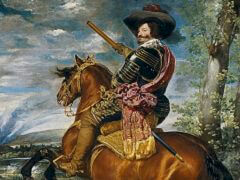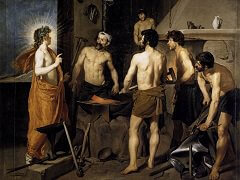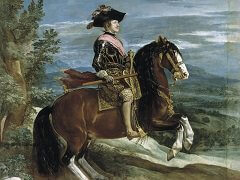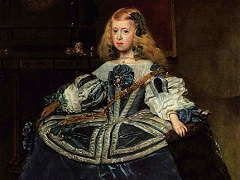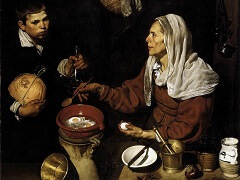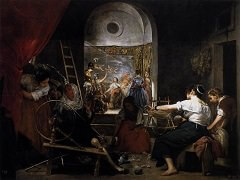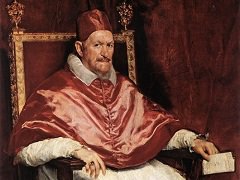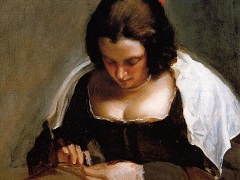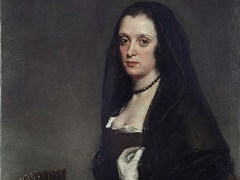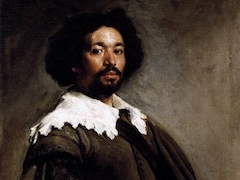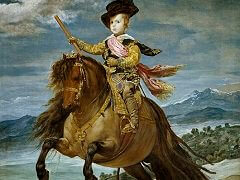The Waterseller of Seville, 1623 by Diego Velázquez
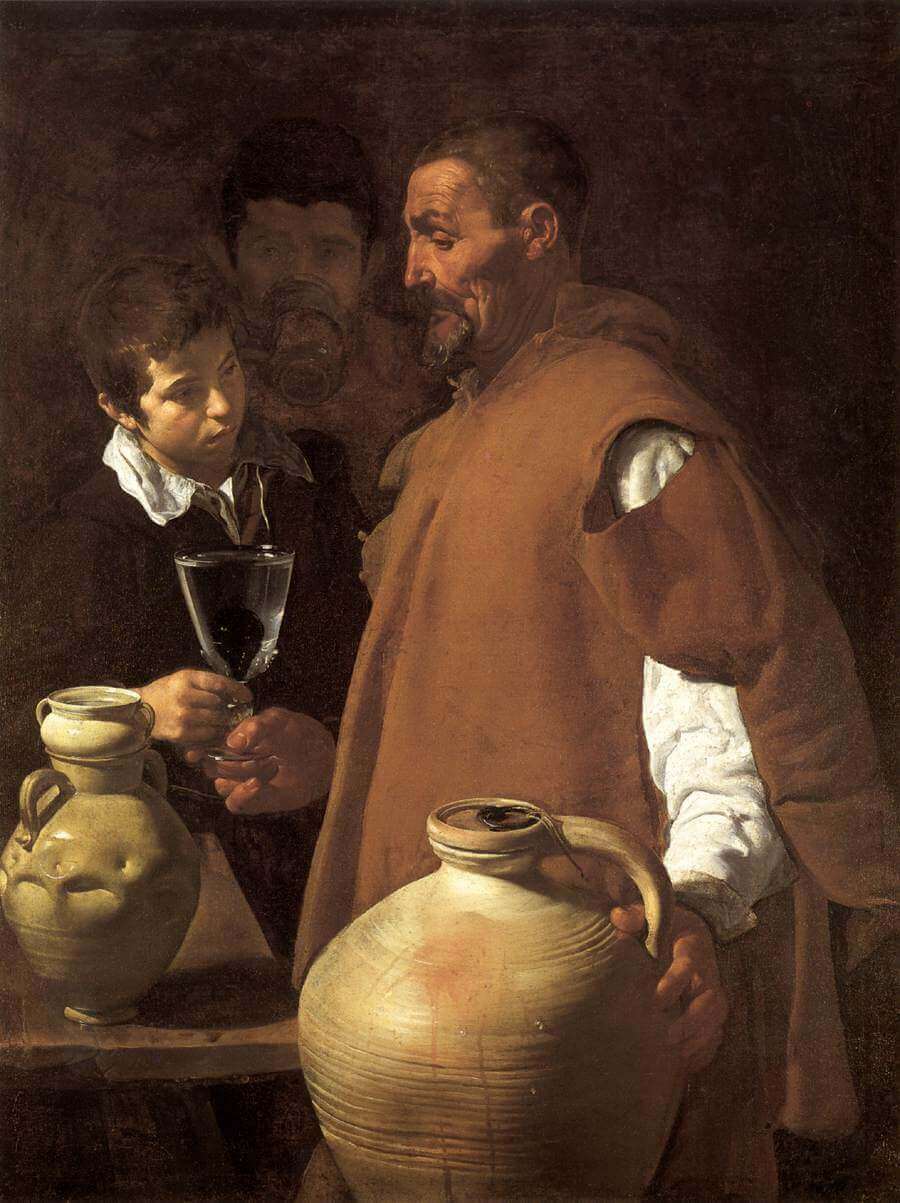
Velázquez made much use of Caravaggesque chiaroscuro in his early pictures. However, he turned the Italian artist's almost aggressive realism into a sharpness of perception that is softened by such picturesque devices as strangely new colours, always in earthy hues, and by his equating of objects and humans in a manner suggesting the experiences of dreams.
A particularly fine example of this approach is Velázquez' first real masterpiece, the Waterseller. An old man whose poor clothing and sharply lit profile are ennobled by the light falling on him is handing a boy a glass of water. The forceful way in which the two jugs, shining in the light, make their presence felt in the foreground, the brilliance of the sparkling drops of water on the curve of the larger pitcher, and the beautiful transparency of the glass match the physical and mental qualities suggested by the three human figures.

